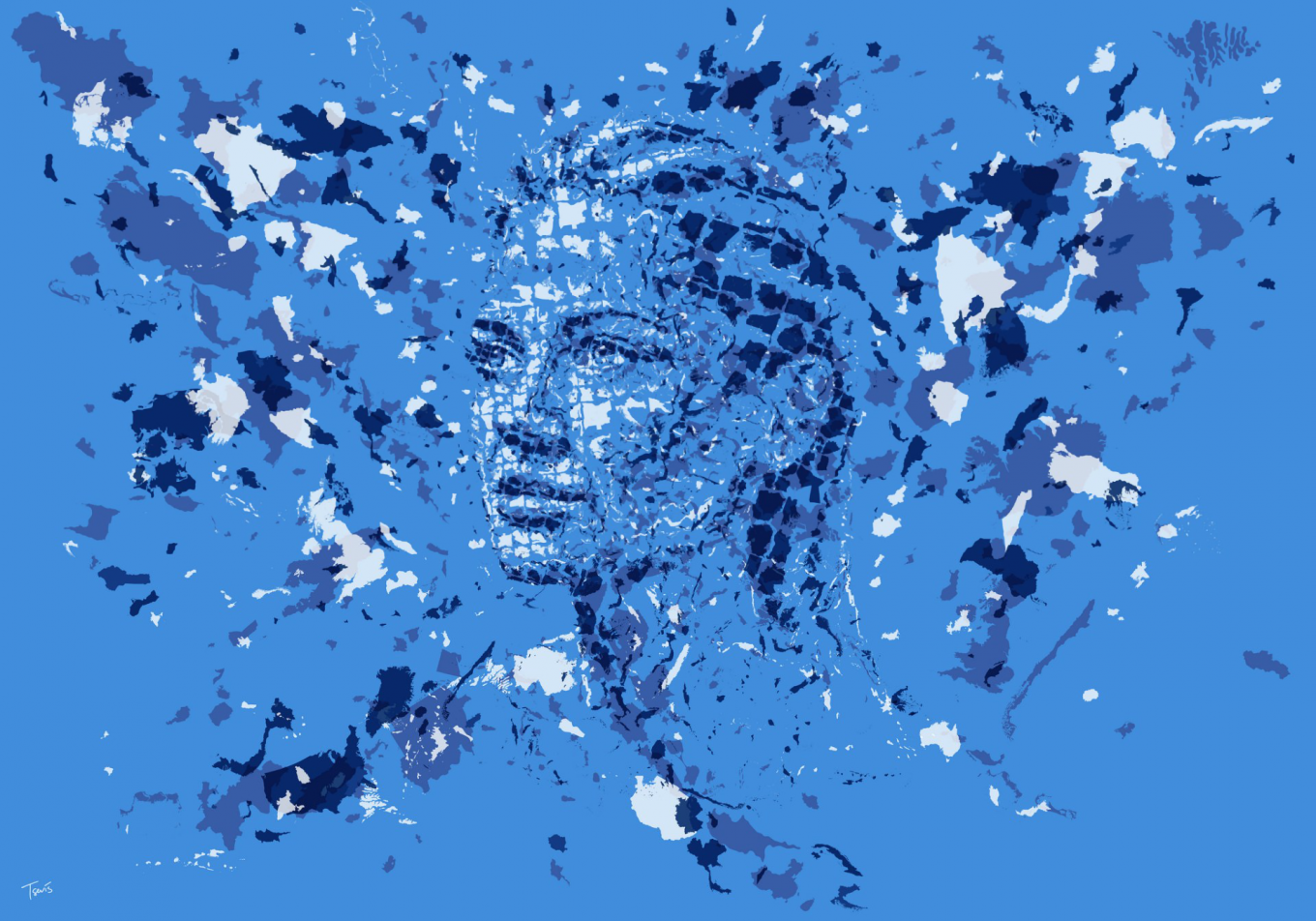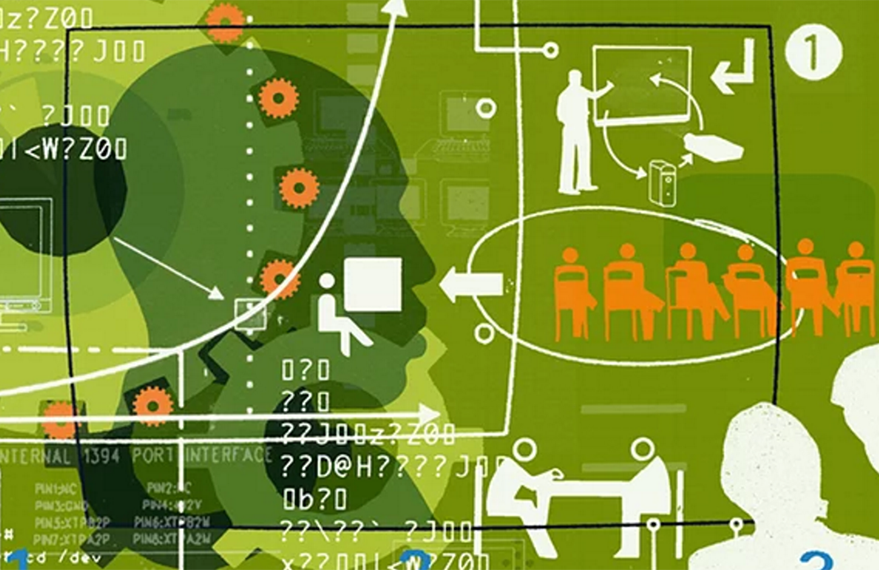Mapping the thoughts of your mind
“Before you say you can’t do something, try it.”
Sakichi Toyoda – Founder Toyota.
We live in the intersection of learning how to master the metrics of our inherited memory and how to adapt to a time of digital fast forward change and disruption. The exact design of our desires is impacted by both of these forces and the outcome of our life is permanently being shaped according to the secrets meanders of our map mind. Whether we like it or not, our mind-map makes itself continuously, and it guides our lives, making us navigate in swirls, circles or linearly.
“Data transmission is no longer something scary you don’t want in your backyard. Now you want it directly in front of your house.”
Douglas Coupland
The issue is that sometimes we’re just not aware of what goes on in our mind. It is therefore key to find ways to control and map our thought life. With a strong focused personal leadership, you can decide and know your thoughts, which will impel you into the best direction for your life, the one of personal commitment to the fulfilment of whatever goals you have set to yourself. That is particularly important in a time of massive data and fast forward disruption, advanced acceleration and social media real time information.
“If you go back back a few hundred years, what we take for granted today would seem like magic – being able to talk to people over long distances, to transmit images, flying, accessing vast amounts of data like an oracle. These are all things that would have been considered magic a few hundred years ago.”
Elon Musk
But this is not an easy task as it involves developing a personal knowledge. If you are willing to go under this process of self-knowledge, your rewards will be immense, as you will become increasingly transparent to yourself and you will develop a more positive self-image that gives you courage to make the right choices and the most appropriate path.
There are various strategies you can use to map yourself. The key is to find a way to visualize and map your mind. You will then realise what is it that is keeping you from moving on and you will understand (and have it written down) what are your obstacles. The next stage is then to work in solutions confidently, that will help you develop, as you go along the process, a strong sense of personal leadership.
A useful strategy to map yourself is doing a SWOT analysis. SWOT stands for strengths, weaknesses, opportunities and threats. When you define your your particular set of SWOTs you will be empowered with a special knowledge about yourself. It is quite important to do it in detail, which will then help you to map yourself correctly.
swot analysis Image Source: novamind.comVisualizing your SWOTs, will help you identifying both your strengths and your threats, problem(s) and situations you are worried about. You achieve then a sort of helicopter view on yourself that lets you distance yourself from the epicentre of emotions that is causing you stress.
How to do it is as simple as writing your SWOTS down by using a digital app or mind map tool. A very simple and effective way can be also to get a notepad and to sketch a vertical line dividing the piece of paper in two halves. Then you can map on the left side of the paper, a clear description of your SWOTs.
Another useful tool is answering a written question: “What exactly am I stressing about?” You should write out the worst possible outcome of the stress situation. Then, on the right hand side of the page, answer another question: “What is the worst possible thing that can happen as a result of this problem?” You may lose your money, lose your relationship, lose your job, your investment, your health, or your prestige. Whatever it is, write it down.
Many of our worries and problems exist because we haven´t taken time to sit down and really define clearly what it is that is bothering us. Mapping our issues is the critical element for getting us out of the hot spot moment and moving us in direction of success. It is resistance to face the worst possible outcome that causes us most of the anxiety and stress associated with worry.
Once you have written down the worst possible thing that can happen, you will find that you will slowly stop worrying. More than 50 percent of all problems can be solved, if we spend some time identifying the issues that are troubling us.
Mapping Your Storytelling
If you were the main character of a story, how would you write it ? The famous writes Paulo Coelho once said:
” Each human being has been granted two courses of action: that of deed and that of contemplation. Both lead to the same place. Each human being has been granted two qualities: power and gift. Power drives a person to meet his/her destiny, his gift obliges that person to share with others which is good in him/her. A human being must know when to use power, and when to use compassion. (…)”
It is that set of powers and gifts that will give you unity and will allow you to identify your personal storytelling. What is it that you have been telling yourself ? What are your own set of powers and gifts and how are these being transformed throughout all our life ?
Our life is a process of constant disruptive transformation. What transforms our life are our conscious and unconscious dreams, quests and challenges. Those keep on changing or come back as “more of the same” disturbing us until we discover its hidden meaning.
“Our life is a process of constant disruptive transformation” IntelligenthqProbably you still have to do it many times further to discover the secret … So you understand the lesson residing there. But we have to deeply respect our own need to “go home” and do it again, embarking in our personal adventure.
As Sam Walton, the founder of Wal-Mart says:
“I had to pick myself up and get on with it, do it all over again, only even better this time.”
Mapping your personal story, the whole picture of what you want, with as much detail as possible, can help you get some preparedness, as it will guide you on how to achieve what is it that you want, and that is somewhat bigger than life. That can be achieved, with the right journey companions, all working together to a common good.
I don’t have doubts that we all have a bigger than life soul. We are all alluring persons, adventurers, special dreamers. Our energy is special, measured by the vigor of how to manage and map the inner balance. We all have to go in a very personal journey to live our days in a sensitive process of metamorphosis, of unfolding our deep compulsory disclosures of what is it that we hold in ourselves that is our gift to the world, that bigger than life mystery.
But this willingness to do, has to be leveraged in our daily challenges, as we moved within the system. There will be moments of disbelief and of questioning what is it that we are doing or trying to achieve. You can get the right answers about the hidden reason of the quest, connecting to your soul and connecting thyself to the earth.
If it is very strong your willingness to let go out of comfort zone, and submerge in a voyage of discovery and dedicate all energy to find out who is the real you and what is there in the other extreme of your personal universe, life and identity, DNA – dreams, allow yourself to go.
It is up to you to believe that your map will guide your journey of personal leadership, (a journey that is intertwined in a net made of social graph cotton). It will be that map that will effortlessly conduct the natural direction of the trip of your life.
“Control is not leadership; management is not leadership; leadership is leadership. If you seek to lead, invest at least 50% of your time in leading yourself—your own purpose, ethics, principles, motivation, conduct. Invest at least 20% leading those with authority over you and 15% leading your peers.” — Dee Hock, Founder and CEO Emeritus, Visa
How To Map Who You are? Guide to Personal Leadership Part 1

Dinis Guarda is an author, academic, influencer, serial entrepreneur, and leader in 4IR, AI, Fintech, digital transformation, and Blockchain. Dinis has created various companies such as Ztudium tech platform; founder of global digital platform directory openbusinesscouncil.org; digital transformation platform to empower, guide and index cities citiesabc.com and fashion technology platform fashionabc.org. He is also the publisher of intelligenthq.com, hedgethink.com and tradersdna.com. He has been working with the likes of UN / UNITAR, UNESCO, European Space Agency, Davos WEF, Philips, Saxo Bank, Mastercard, Barclays, and governments all over the world.
With over two decades of experience in international business, C-level positions, and digital transformation, Dinis has worked with new tech, cryptocurrencies, driven ICOs, regulation, compliance, and legal international processes, and has created a bank, and been involved in the inception of some of the top 100 digital currencies.
He creates and helps build ventures focused on global growth, 360 digital strategies, sustainable innovation, Blockchain, Fintech, AI and new emerging business models such as ICOs / tokenomics.
Dinis is the founder/CEO of ztudium that manages blocksdna / lifesdna. These products and platforms offer multiple AI P2P, fintech, blockchain, search engine and PaaS solutions in consumer wellness healthcare and life style with a global team of experts and universities.
He is the founder of coinsdna a new swiss regulated, Swiss based, institutional grade token and cryptocurrencies blockchain exchange. He is founder of DragonBloc a blockchain, AI, Fintech fund and co-founder of Freedomee project.
Dinis is the author of various books. He has published different books such “4IR AI Blockchain Fintech IoT Reinventing a Nation”, “How Businesses and Governments can Prosper with Fintech, Blockchain and AI?”, also the bigger case study and book (400 pages) “Blockchain, AI and Crypto Economics – The Next Tsunami?” last the “Tokenomics and ICOs – How to be good at the new digital world of finance / Crypto” was launched in 2018.
Some of the companies Dinis created or has been involved have reached over 1 USD billions in valuation. Dinis has advised and was responsible for some top financial organisations, 100 cryptocurrencies worldwide and Fortune 500 companies.
Dinis is involved as a strategist, board member and advisor with the payments, lifestyle, blockchain reward community app Glance technologies, for whom he built the blockchain messaging / payment / loyalty software Blockimpact, the seminal Hyperloop Transportations project, Kora, and blockchain cybersecurity Privus.
He is listed in various global fintech, blockchain, AI, social media industry top lists as an influencer in position top 10/20 within 100 rankings: such as Top People In Blockchain | Cointelegraph https://top.cointelegraph.com/ and https://cryptoweekly.co/100/ .
Between 2014 and 2015 he was involved in creating a fabbanking.com a digital bank between Asia and Africa as Chief Commercial Officer and Marketing Officer responsible for all legal, tech and business development. Between 2009 and 2010 he was the founder of one of the world first fintech, social trading platforms tradingfloor.com for Saxo Bank.
He is a shareholder of the fintech social money transfer app Moneymailme and math edutech gamification children’s app Gozoa.
He has been a lecturer at Copenhagen Business School, Groupe INSEEC/Monaco University and other leading world universities.



























